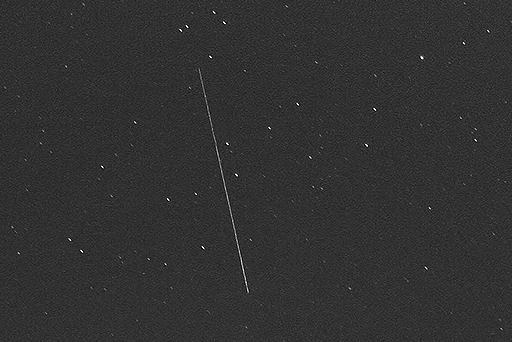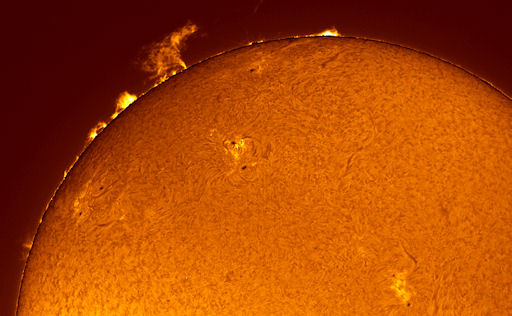They came from outer space--and you can have one! Genuine meteorites are now on sale in the Space Weather Store. | | |
AROUND THE POLES: NOAA forecasters estimate a 25% chance of geomagnetic activity around the poles today as a solar wind stream buffets Earth's magnetic field. High-latitude sky watchers should be alert for auroras after nightfall. Aurora alerts: text, phone.
PHOBOS GRUNT UPDATE: Russia's Mars probe, Phobos-Grunt, remains stuck in low Earth orbit after its main engines failed to fire on Nov. 8th. Russian and ESA antennas have made intermittant radio contact with the probe, but this has not allowed Roscosmos, the Russian space agency, to re-establish control. Unless matters improve, Phobos-Grunt will re-enter the atmosphere in January or February 2012 and become a brilliant fireball over some part of Earth
Until then, it is possible to see the doomed probe slicing brightly through the night sky:

Veteran satellite tracker Marco Langbroek took this picture from his home in Leiden, the Netherlands, on Nov. 30th. "This image was shot at 17:40 UT (30 Nov 2011) when the Phobos-Grunt was visible at 20 degrees elevation low in the west," he says. "The space probe was about magnitude +4. I also observed it one pass earlier in very deep twilight at 16:08 UT (sun at -5 degrees only with only brightest stars visible), when it made a 45 deg elevation pass. It was bright then, and an easy naked eye object nothwithstanding the bright blue sky. It was brighter than Altair, showed no brightness variation, and was very fast."
Ready to see for yourself? Spaceweather.com's online Satellite Tracker is following Phobos-Grunt. Flyby predictions may also be found on your smartphone.
SOLAR ACTIVITY: With no sunspots producing strong flares, the sun is officially quiet. But flares are only one aspect of solar activity. For example, amateur astronomers are monitoring a plume of hot plasma rising over the sun's eastern limb:

"The sun is filled with activity," says Greg Piepol of the Rising Sun Observatory in Rockville, Maryland. "Huge prominences, active regions and sunspots make for an absolutely beautiful view."
Theo Ramakers of Social Circle, Georgia, agrees: "When I saw the sun this morning I could not believe my eyes. The prominence on the eastern limb was absolutely breathtaking at about 7 times the size of earth! Great to see the sun is still very active."
Readers with solar telescopes are encouraged to monitor the "quiet sun.".
more images: from Steve Rismiller of Milford, Ohio; from John Stetson of Falmouth, Maine; from John Chumack of Dayton, Ohio; from Dave Jenkins of Tundu, Wales; from Pepe Manteca of Begues (Barcelona) Spain; from Wayne Wooten of Pensacola, Florida; from Jett Aguilar of Quezon City, Philippines;

